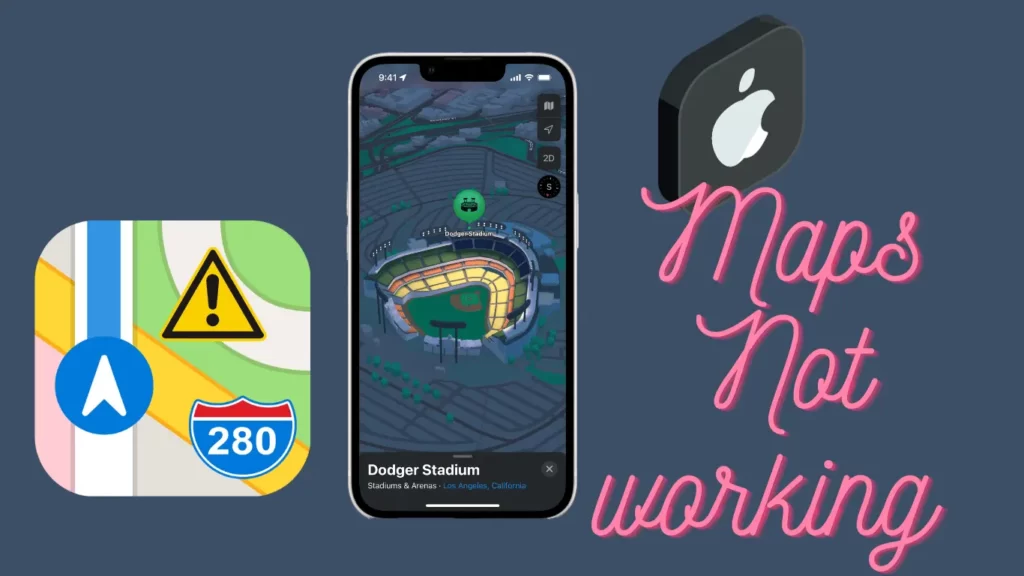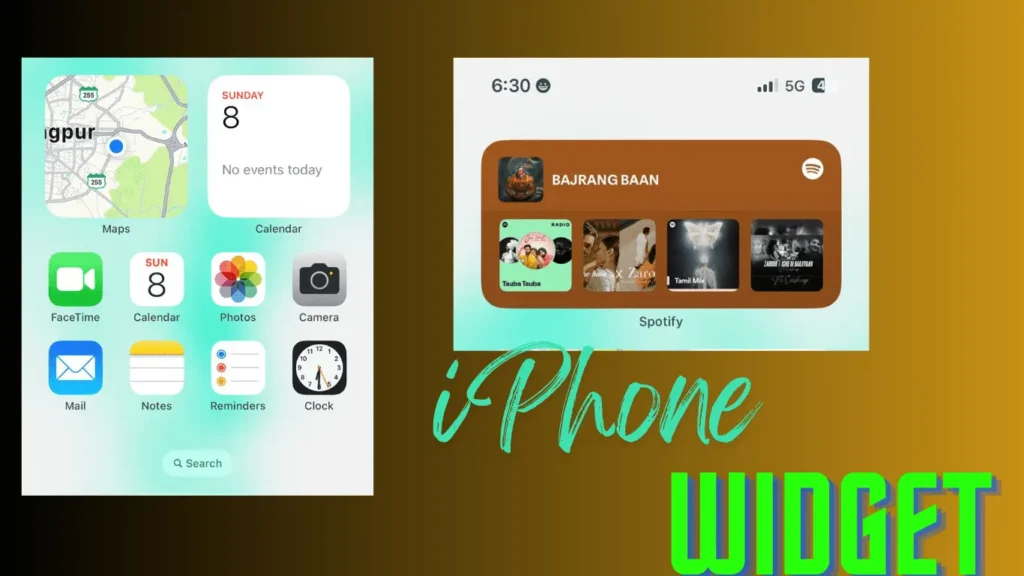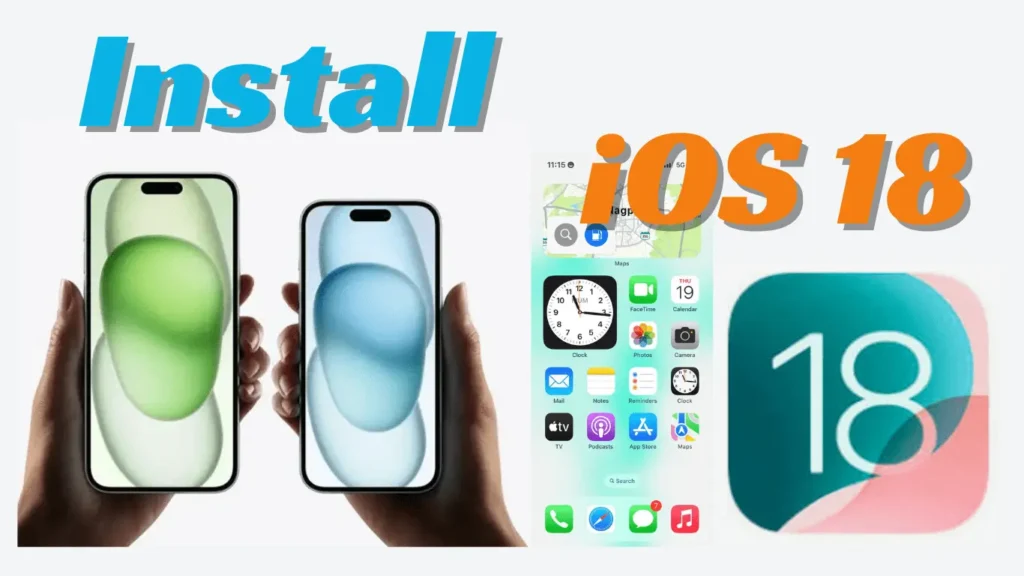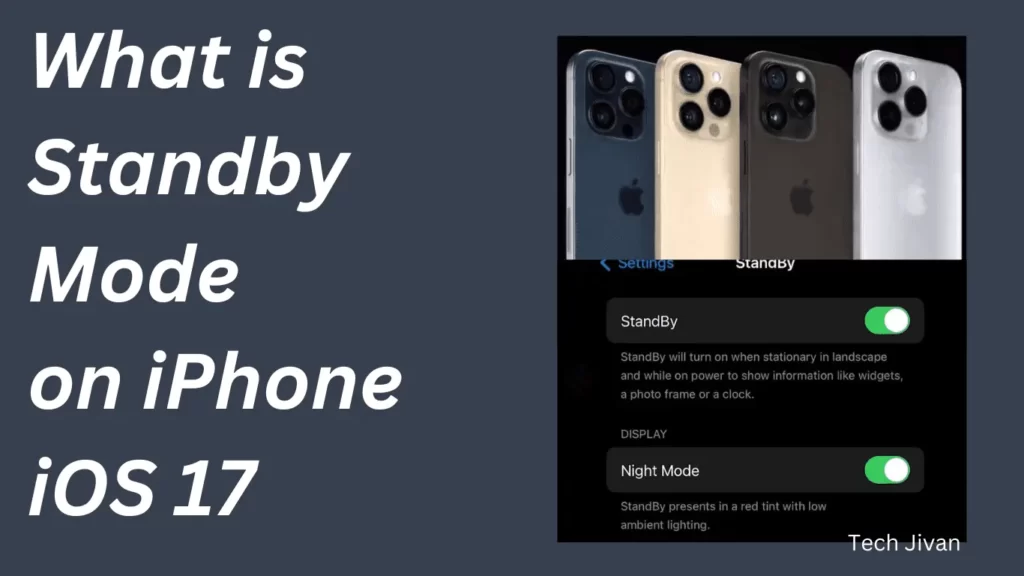
The iPhone Maps app is Apple’s navigation tool, which people use to find the correct locations or go anywhere. Despite its widespread support, occasional glitches are occurring, such as displaying incorrect locations, GPS malfunctions, or complete app failures.
In this article, we’ll discuss the troubleshooting steps to address Apple Maps Not Working issues on your iPhone, which ensures a smoother experience with the Apple Maps application.
Table of Contents
What Are The Causes Of Apple Maps Not Working?
Issues with the Apple Maps app can arise due to various factors, often from user-selected settings related to map data and functionality.
Since the app relies on GPS, internet, and cellular connectivity, disruptions in these services can lead to inaccurate directions or location inaccuracies.
There are some common causes of iPhone Apple Maps Not Working Issue include:
- Crashes in the Apple Maps app.
- Voice guidance failure.
- Inaccurate iPhone location representation.
- GPS malfunction within Maps.
- Unavailability of location information.
- Non-functional location services.
That’s it. These challenges may impact the overall user experience when using the Apple Maps app on an iPhone. Let’s move to the methods for troubleshooting the Apple maps’ problems.
Read Also: Guide On ChatGPT Plugins: How To Use ChatGPT Plugins?
Methods For Troubleshooting The Apple Maps Not Working
Method 1. Ensure you’re connected to the internet:
For iPhone Maps to function correctly, a stable internet connection is essential. If you find yourself in a location with poor signal reception, such as within a dense building, it’s likely that you’ll need help with iPhone Maps. Move to a different area where you can access a stronger signal to check if this resolves the problem.
Addressing weak internet connections is crucial, as they are a common culprit for errors in various apps. This is particularly true for Apple Maps, which relies on a consistent internet connection to load map data and provide directions.
Begin by confirming that you have an active internet signal through Wi-Fi or mobile data. If using Wi-Fi, consider moving closer to the Wi-Fi access point, typically your router. For those relying on mobile data, relocate to an area with a stronger cellular connection.
If you’re concurrently downloading apps or files in the background, your internet signal may be congested, impacting the loading of Apple Maps data. Temporarily disconnecting from your current internet signal and then reconnecting may also prove helpful.
Read Also: The 8 Best Midjourney Alternatives In 2024
Method 2. Confirm Cellular Data Settings for Maps:
To ensure proper functionality, every iPhone app, including Maps, needs an active Internet connection. Follow these steps to enable cellular data:
Step 1: Open Settings on your iPhone.
Step 2: Select Cellular.
Step 3: Scroll through the list and check if the Maps app has permission to use cellular data.
Method 3: Enable Location Access.
Encountering issues with the iPhone Maps app can sometimes be attributed to bugs. If you’re facing problems, refreshing your location services might provide a solution.
Navigate to the Settings app on your iPhone, access Privacy, then choose Location Services. Toggle the Location Services switch to Off and back to On.
If your iPhone has a stable internet connection and GPS signal, but Apple Maps fails to locate you, it’s possible that Location Access has been inadvertently disabled.
To rectify this, go to the Settings app, scroll down to Privacy & Security, and select Location Services.
Ensure that Location Services is enabled, then scroll and tap on Maps. Activate Precise Location and choose either “While Using the App” or “While Using the App or Widgets.”
Read Also: Google Maps Not Working: How To Fix The Problem?
Method 4. Resetting Location And Network Data:
If your iPhone Maps is experiencing issues due to problems with location or network data, a simple fix is to reset these settings. Follow these steps:
Step 1: Navigate to Settings > General > Reset on your device.
Step 2: Select “Reset Network Settings” and “Reset Location & Privacy.”
Step 3: After resetting, reconnect your iPhone to Wi-Fi and reconfigure any custom network settings.
Step 4: Test if the iPhone Maps functionality has been restored.
Method 5. You Need To Restore Your iPhone:
To restore your iPhone using this method, it’s essential to back up all your data first. You can find a convenient way to do this in the bonus tip section.
If the previous methods haven’t resolved your issues, restoring your iPhone is a viable solution.
Use iTunes by connecting your iPhone to your computer via a USB cable. Navigate to the device tab, select Summary, and click on Restore iPhone.
Method 6. Resolve iPhone Maps Issues with Ease:
You can use AnyFix, a proficient system/iTunes problem solver capable of effortlessly addressing over 200 iTunes and 130+ system issues.
Troubleshooting the prevalent Apple maps not working problem is simplified with the following steps:
Step 1: Download and launch AnyFix on your computer, then connect your iPhone.
Step 2: Select System Repair.
Step 3: Opt for 50+ iPhone Problems and click Start Now.
Step 4: Choose Standard Repair to fix the issue without risking data loss.
Step 5: Upon completion, observe the confirmation screen on your computer.
Read Also: Guide To Install & Use Popcornflix On FireStick & Android
Conclusion
Here, we’ve completed our guide on resolving Apple Maps not working issues and an alternative method for iPhone data backup. If you still have any inquiries, feel free to leave them in the comment section or contact our support team via email; expect a response within 24 hours. Also, remember to explore our other posts for a seamless experience.







